
1 The demonstration was organized in connection with the celebration of Thanksgiving (Reichserntedankfest), which was held in Buckeburg (Buckeberg) in 1934.
The number of participants was estimated at 700,000 people.
According to the stories of Germans who did not support the Nazis, even they were shocked by the scale of the event.
Up to this point no one seen anything like it.
Witnesses and participants of the event spoke about the feeling of national unity, emotional lift, incredible enthusiasm and attitude changes for the better.
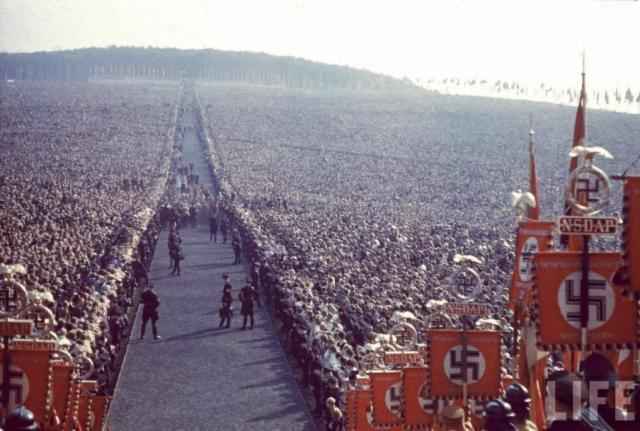
When the Germans after the demonstration went to their tents, they still watched huge lightning in the sky.
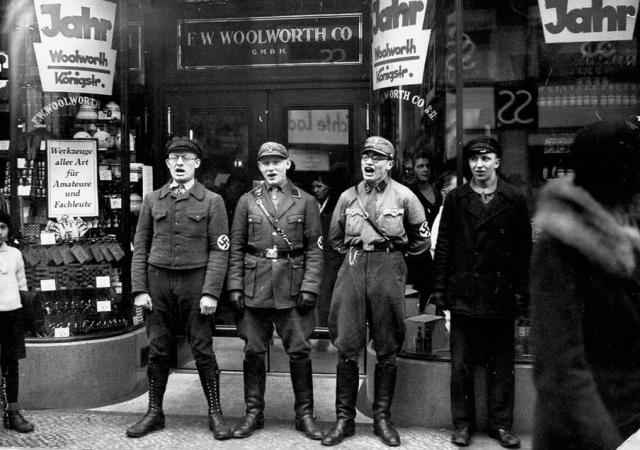
2 Nazi stormtroopers in Berlin sing near the entrance to the branch of the Firm Woolworth Co. March 1, 1933. This day was organized campaign to promote the boycott of the Jewish presence in Germany.
As soon as the Nazis came to power, they began to call all German citizens to boycott Jewish organizations and businesses. Began a long campaign to promote.
April 1 Minister Joseph Goebbels (Joseph Goebbels) delivered a speech in which he explained the need for a boycott in retaliation for "conspiracy against German Jews of the world" in the foreign media.
Depicted in the photo shop was owned by "Woolworth" whose leadership later left without work of all employees of Jewish origin.
In this regard, the company received a special distinguishing mark "Adefa Zeichen", which meant belonging to a "pure Aryan business."
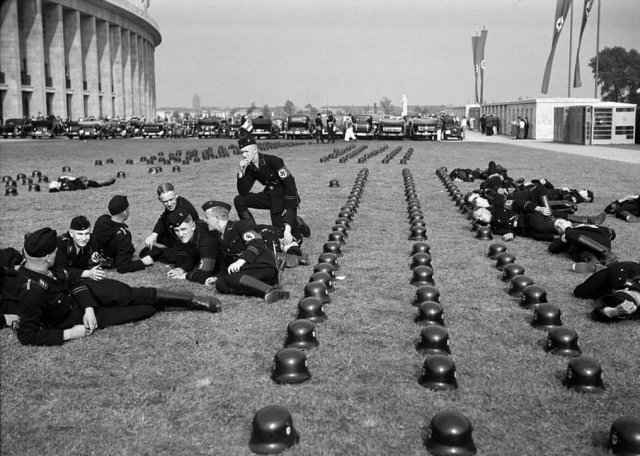
3 SS soldiers rest near the Olympic stadium in Berlin in August 1936. These SS men served in the guard battalion intended for Hitler's bodyguard and his escort during public events.
Some time later, the battalion was called the elite first division "Leibstandarte SS" Adolf Hitler "" (Leibstandarte SS "Adolf Hitler"). The unit was very large and accompanied Hitler everywhere, wherever he went.
In wartime, the division took part in the fighting, showing himself as one of the best units in the entire war.
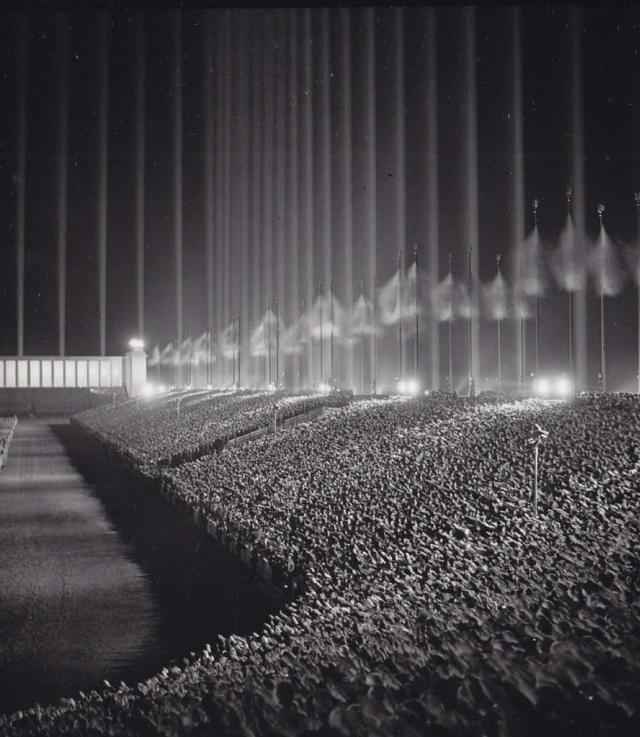
4 Parade Nazis in 1937 in "The Temple of Light". This building was a powerful searchlight 130 facing each other at a distance of 12 meters and looking straight up.
This is done in order to create a lighting column. The effect was incredible, with columns inside and outside. The author of this creation was the architect Albert Speer (Albert Speer), it was his favorite masterpiece.
Experts still believe that this work - the best thing that has created Speer, Hitler ordered that issue area in Nuremberg for the parades.
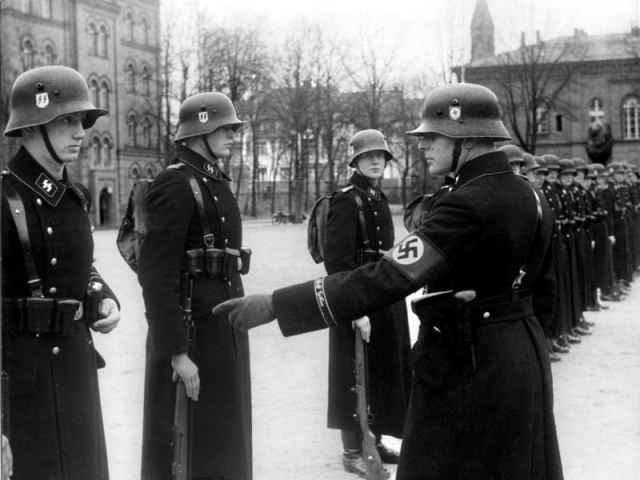
5 Picture taken in 1938 in Berlin, Germany. On it soldiers bodyguard Fuhrer pass drill training. This division was in the barracks Lichterfelde (Lichterfelde).
Soldiers armed with carbines Mauser Kar98k, and logos on the collar in the form of lightning - is the hallmark of an SS unit.
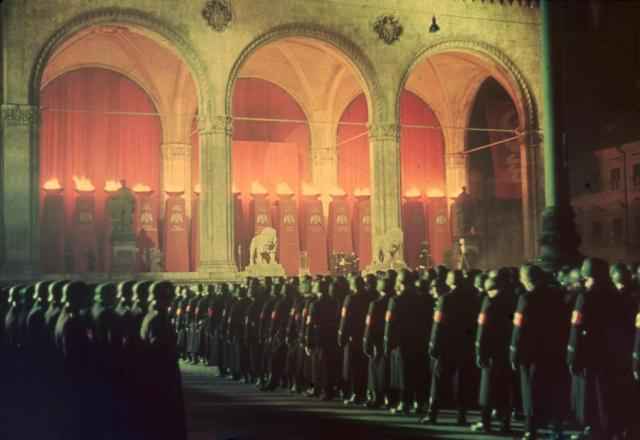
6 "Hall Bavarian generals" in Munich, 1942. Annual oath, passing in the Waffen SS. The oath was as follows: "I give you my pledge to you, Adolf Hitler, always be a warrior brave and faithful. Oath I give thee, and the commanders to be determined for me to be faithful to his death. So help me God."

7 SS slogan read: "Our honor - this is our loyalty."
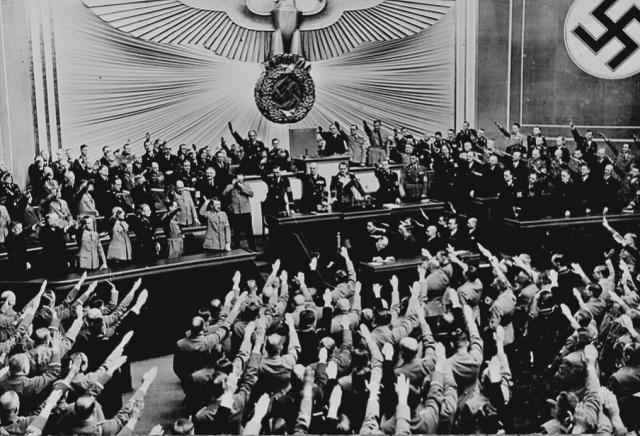
8 Greeting Fuhrer after the announcement of the successful annexation of Austria. The action takes place in 1938 in the Reichstag. The most important position ideology of the Nazis was to unite all Germans who were born or live outside Germany, to create a "Vsegermanskogo Reich."
From the moment Hitler came to power, Hitler announced that he by any means will achieve the unification of Germany and Austria.
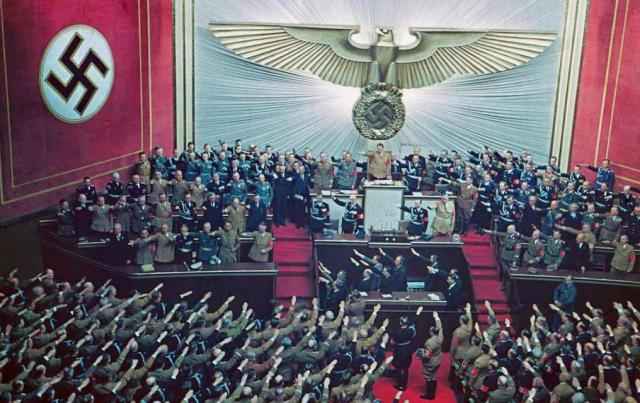
9 Another photo from such an event.
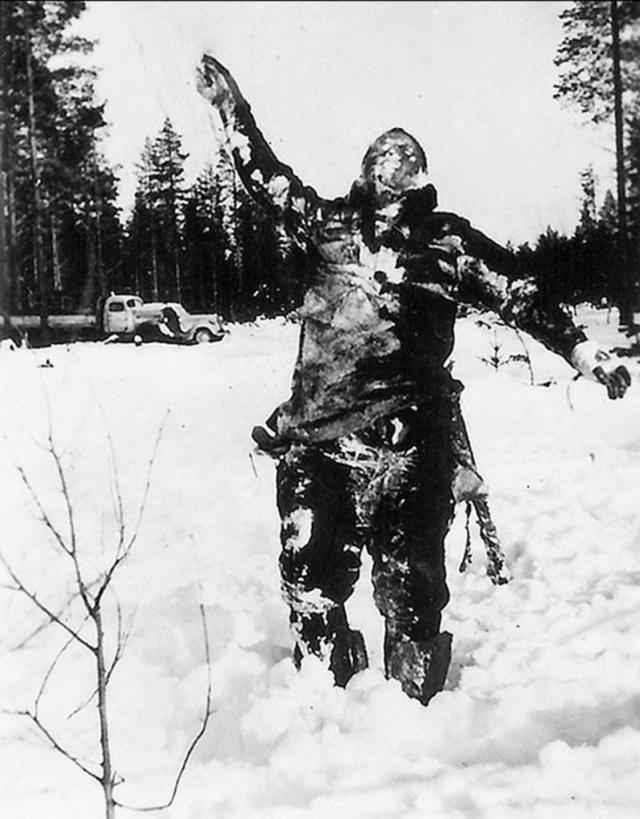
10 frozen body of a Soviet soldier, which in 1939 paraded Finns to intimidate going to attack Soviet troops. Finns have often used this technique of psychological impact.
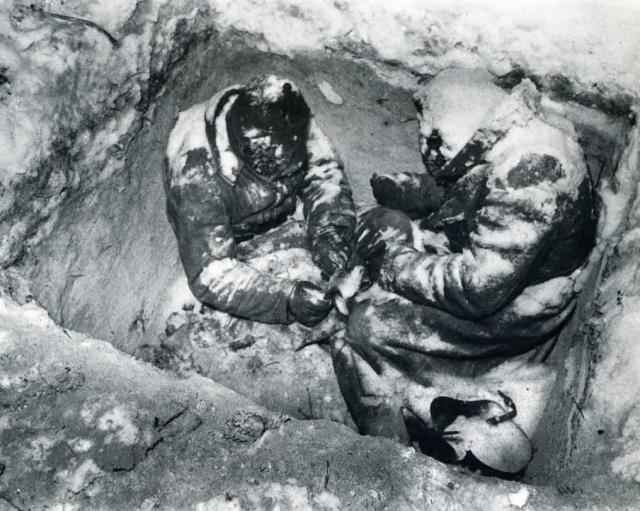
11 Soviet infantrymen, frozen in the "foxhole" in Finland in 1940. Troops forced to redeploy on the Finnish front of the remote regions. Many of the soldiers were not at all prepared for an extremely harsh winter, once in Finland from the southern regions.
Moreover, the Finnish saboteurs regularly watched the destruction of the rear services. Soviet troops experienced great difficulties due to lack of food, winter clothing and proper training.
Therefore, the soldiers covered their trenches branches, and on top of them dusted with snow. Such a shelter and was called "fox burrow."
World War II: photos
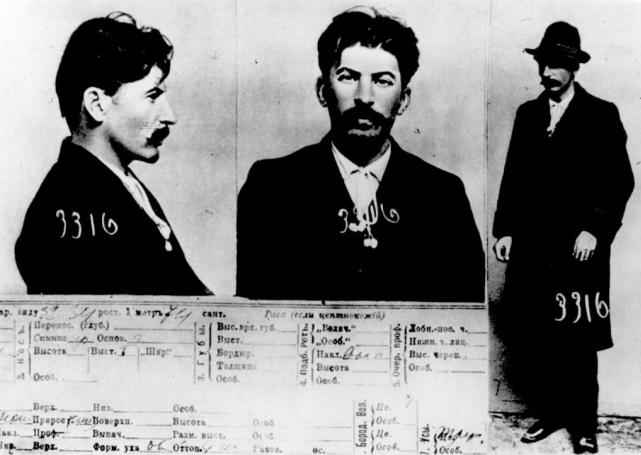
12 Photo of Joseph Stalin from the police archives, made during his arrest by the secret police in 1911. It was his second arrest.
First time Okhranka interested in him in 1908 because of his revolutionary activities. Then Stalin had been in prison for seven months, and after that he was sent for two years in the city Solvychegodsk into exile.
However, the leader of the whole period was not spent, as some time later escaped disguised as a woman and went to St. Petersburg.
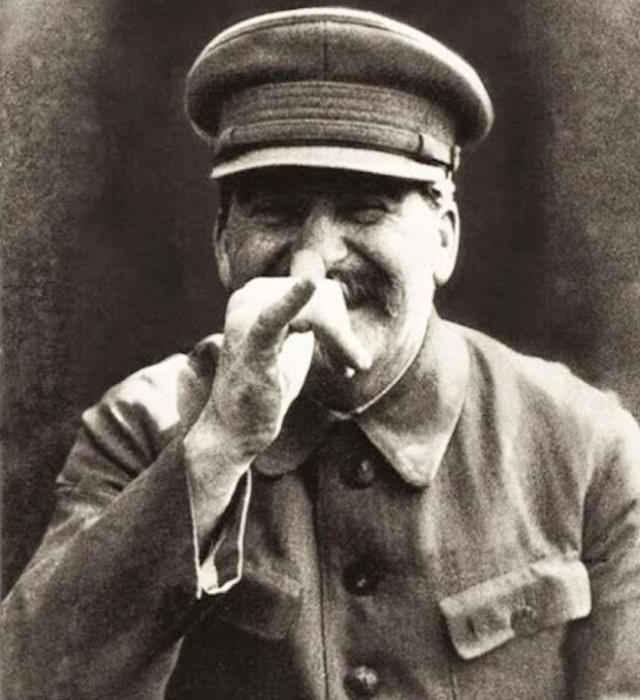
13 This is an unofficial photo taken Vlasik, Stalin's personal bodyguard. In 1960, when I first was made public this and some other works Vlasik, they became a sensation. Then one Soviet journalist had brought them out of the Soviet Union and sold to foreign media.
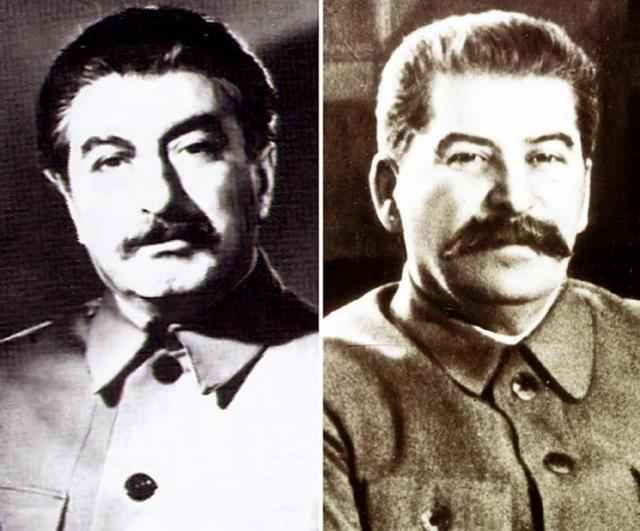
14 Picture taken in 1940. Stalin on it (right) and his counterpart Felix Dadaev. A very long time in the USSR went unconfirmed rumors that the leader has a twin, which replaces it in certain circumstances.
After several decades of Felix finally decided to draw a veil of secrecy. Dadaev, former dancer and juggler, was invited to the Kremlin, where he was offered a job as understudy Stalin.
For over 50 years, Felix was silent because he was afraid of death for breach of contract. But when he was 88 years old, in 2008, of course with the permission of the authorities, Dadaev published a book in which he described in great detail how he happened to "play" the leader in various demonstrations, military parades and filming.
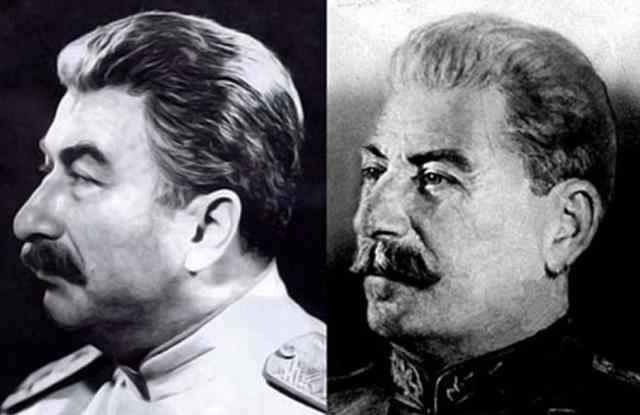
15 Even the closest companions and comrades Stalin could not tell them apart.
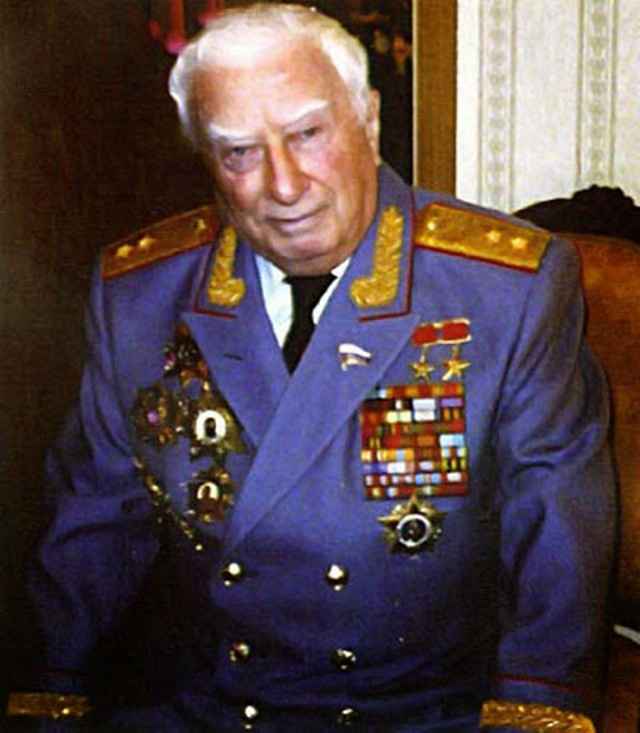
16 Felix Dadaev in dress uniform of lieutenant general.
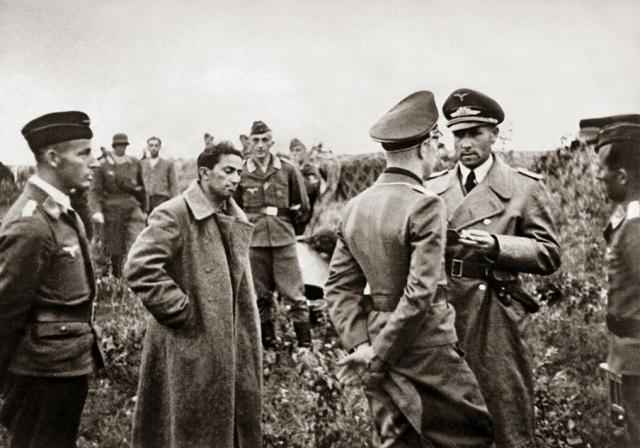
17 Jacob Dzhugashvili, Stalin's eldest son, was captured by the Germans back in 1941. According to some historians Jacob himself surrendered. About the life of the son of the leader still go many conflicting rumors and legends.
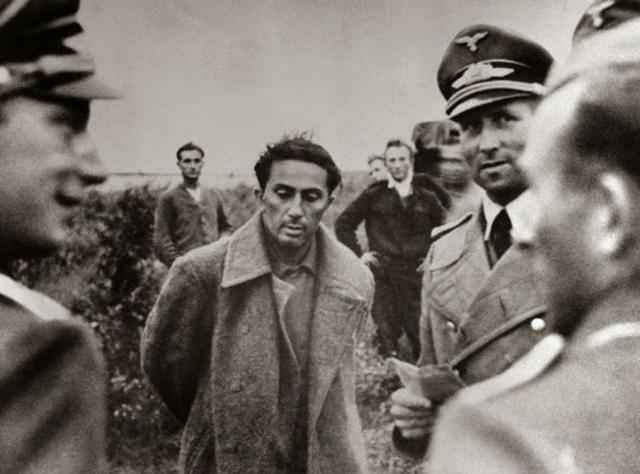
18 After receiving a package from Germany, Stalin finds out about the capture of his son. Vassily, the youngest son of the leader, heard from his father: "What a fool, not even managed to shoot". It was also said that Stalin blamed Jacob that he surrendered to the enemy like a coward.
Photos of World War II
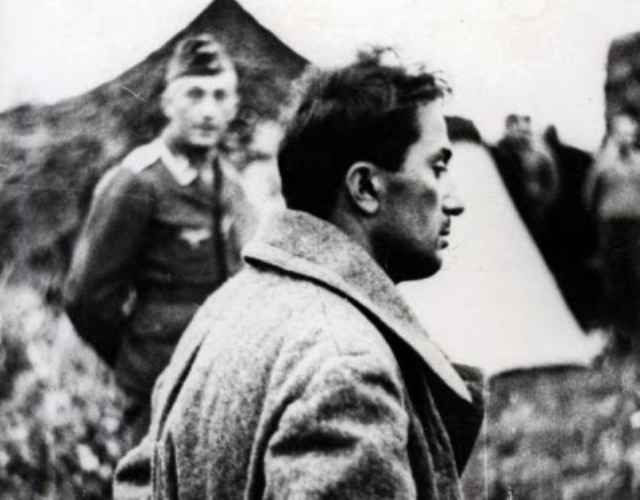
19 James wrote to his father: "Dear Father, I am a prisoner. Feels good. Soon myself in a camp in Germany POW officers. Treats me well. Bless. Thank you for everything. Yasha."
Some time later, the Germans received a proposal to exchange Yakov for Field Marshal Friedrich von Paulus (Friedrich von Paulus), which Stalingrad was captured.
It was rumored that Stalin refused such a proposal, saying that it will not change the whole field marshal in the ordinary soldier.
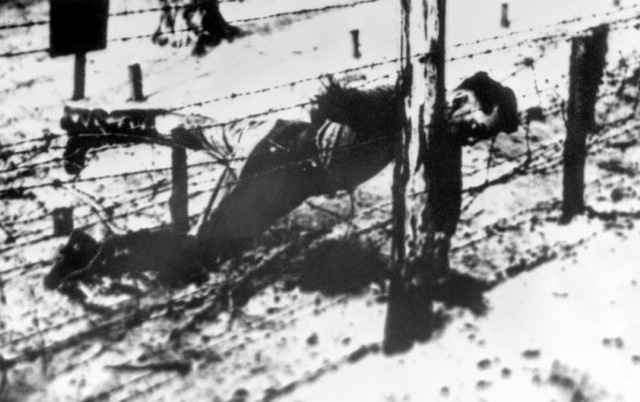
20 Not so long ago byi declassified some documents, according to which James shot the camp guards after he refused to obey the established order.
While walking Jacob received an order of protection from return to the barracks, but he refused, and the guard killed him with a shot to the head. When Stalin learned of this, he softened considerably in relation to his son, finding a dignified death.
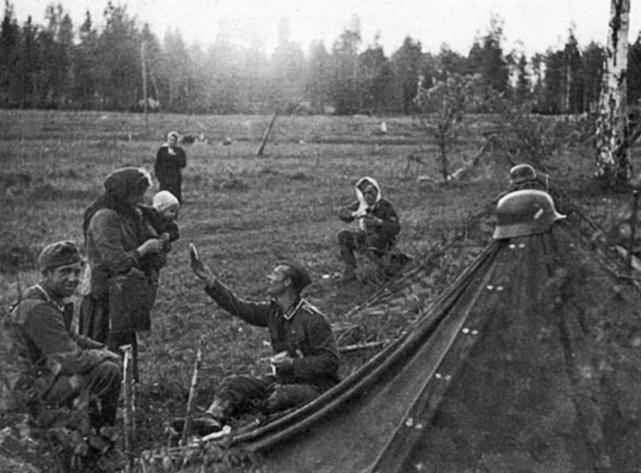
21 German soldier shares food with a Russian woman with a child in 1941. His gesture in vain, because his role - is doomed to starvation of millions of mothers. Taken by photographer 29 Wehrmacht divisions Gyundlah George (George Gundlach).
This image, along with others, went into the landscape collection "Volkhov battle. Documentary horror of 1941-1942."
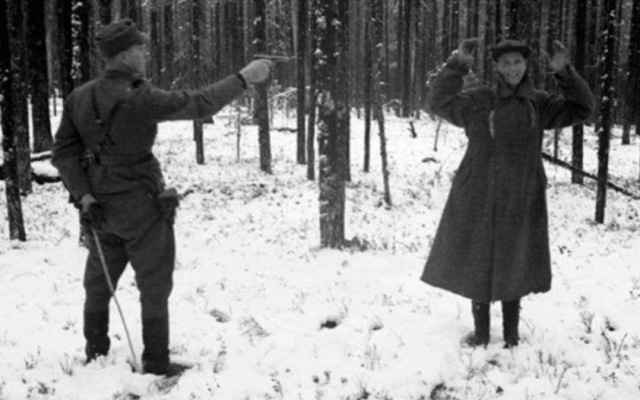
22 Caught Russian spy laughs, looking into the eyes of his death. The photo was taken in November 1942 in Eastern Karelia. We have before us the last seconds of life. He knows that he will die now and laughs.
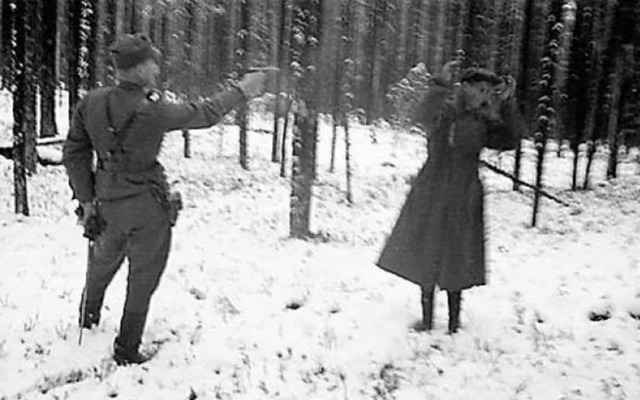
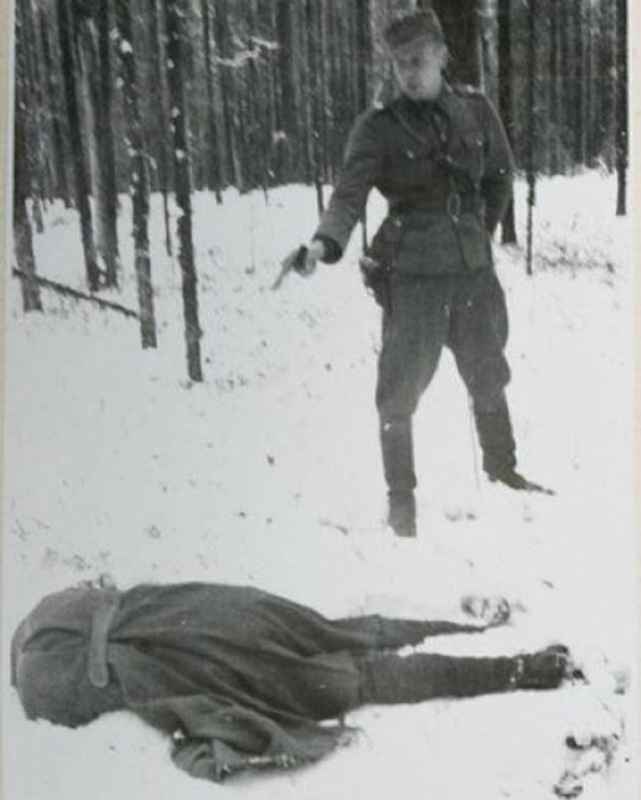
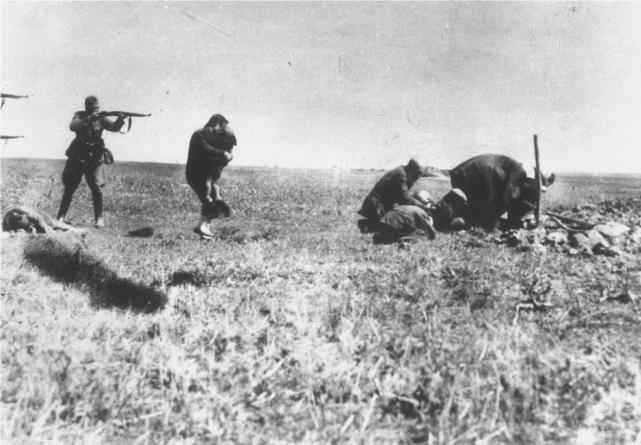
23 in 1942. Ivanograda neighborhood. German punitive units executed Jews of Kiev. In this photo German soldier shoots at a woman with a child.
Rifles other punitive visible in the left part of the photo. This picture was sent to the Eastern Front in the mail to Germany, but intercepted in Poland the Warsaw resistance, which collects evidence of Nazi war crimes in the world.
Today this image is stored in Warsaw, in the Historical Archives.
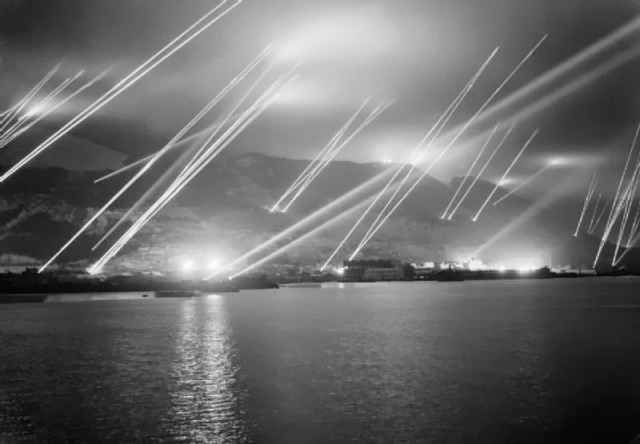
24 Rock of Gibraltar in 1942. The beams of searchlights that helped gunners to shoot at the Nazi bombers.
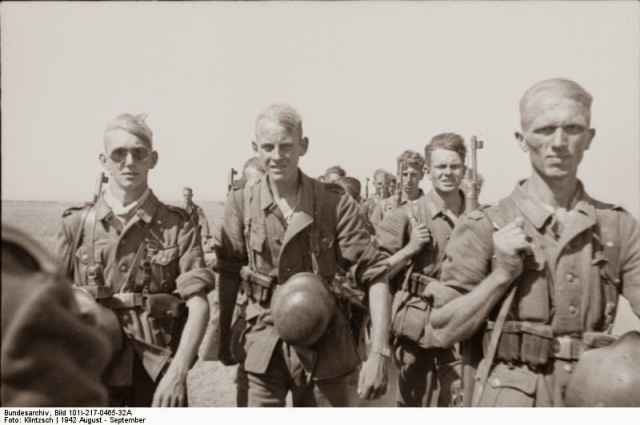
25 in 1942, the suburbs of Stalingrad. Marching 6th Army. Soldiers do not even realize that most are sent to hell. Most likely, the next spring, they would not see.
One of the soldiers going in their own sunglasses. It is an expensive thing, which is issued solely for motorcyclists and soldiers of the Afrika Korps.
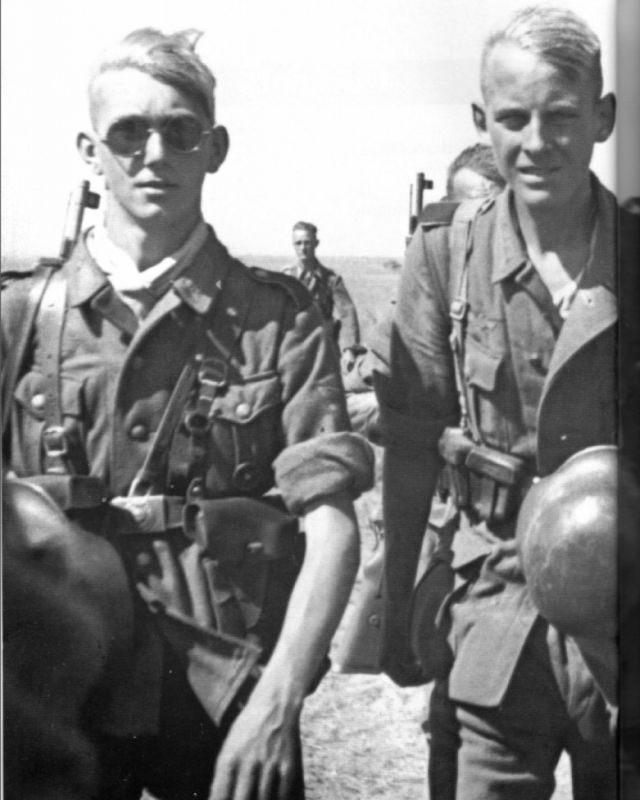
26 Going to Hell.
Photos from World War II
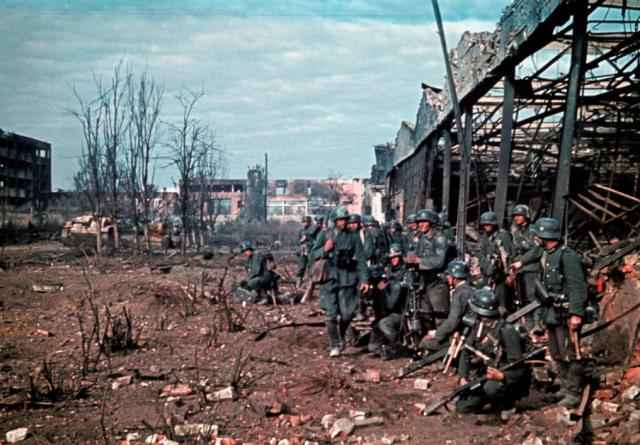
27 Stalingrad in 1942. Preparing for the assault on the warehouse. German soldiers were forced to fight to beat every building, every street. It was then that they discovered that a tactical advantage, which was at their disposal in open spaces, fell into oblivion due to the closeness of the city.
In street fighting tanks could not express themselves. Oddly enough, but snipers in such conditions played a much more important role compared with tanks and artillery.
Severe weather conditions, the lack of an adequate level of supplies and uniforms, as well as the stubborn resistance of our soldiers have resulted in the complete defeat of the fascist army at Stalingrad.
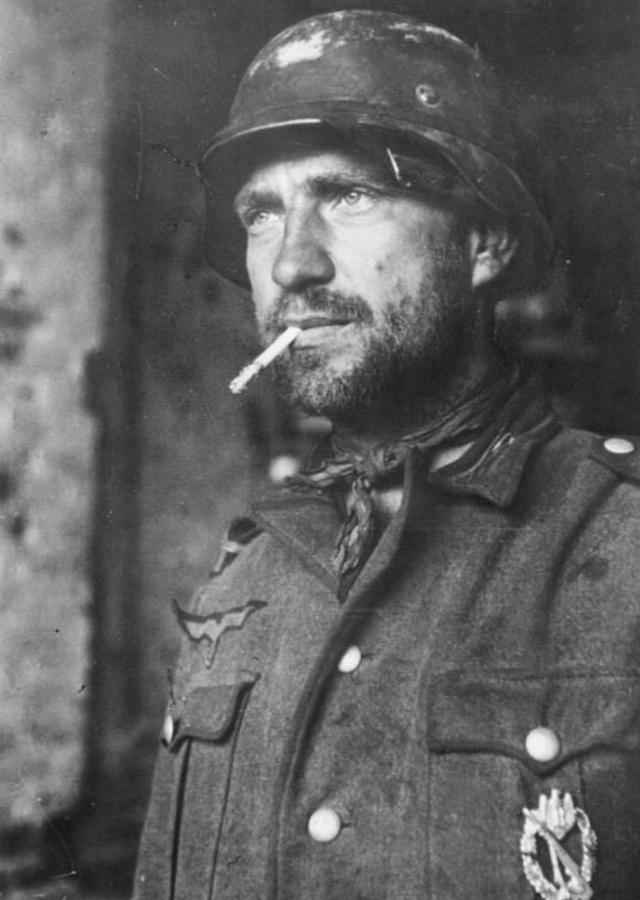
28 in 1942, Stalingrad. A German soldier with the Silver infantry assault badge. This distinction was awarded to infantry soldiers who participated at least in three assault operations.
For soldiers such award was not less honorable than the Iron Cross, which was established specifically for the Eastern Front.

29. Немецкий солдат прикуривает от огнемёта.

30 in 1943. Warsaw. The bodies of dead Jews and Ukrainian police. Picture taken in the Warsaw ghetto during the uprising. Original German signature to the picture reads: "The policemen also took part in the operation."
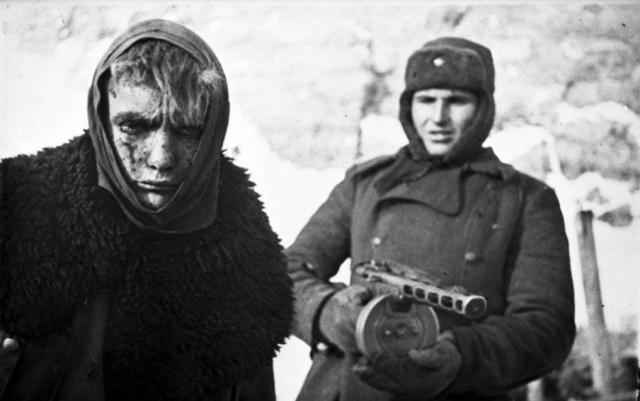
31 in 1943. Battle of Stalingrad. Soviet soldier with a submachine gun PPSh - 41 escorting the German prisoner. Nazi troops at Stalingrad, was surrounded, were completely overwhelmed.
This battle is considered one of the fiercest and bloodiest in the history of all wars. It claimed the lives of more than two million people.

32 Summer 1944. Belorussian strategic offensive operation "Bagration". Following this operation the German Army Group "Center" was entirely destroyed.
The front line of 1100 kilometers in two months of fighting has been moved 600 kilometers to the west. German troops in the battle lost five times more people than the Soviet.
Photos of World War 2
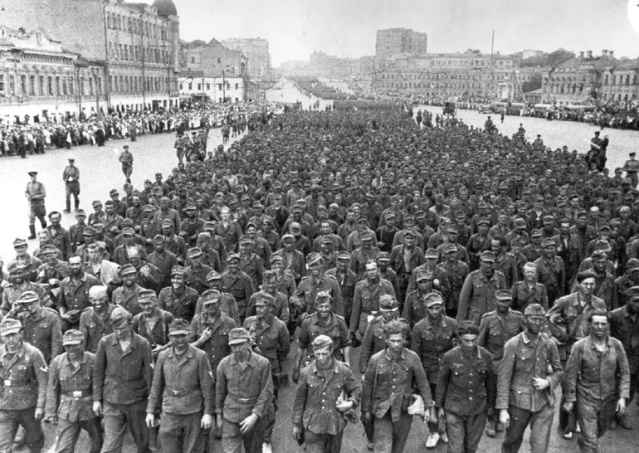
33 July 17, 1944. Streets of Moscow. March of tens of thousands of German prisoners. "Operation Bagration" is considered to be the most successful for the entire period of the war.
Offensive on the Eastern Front began immediately after the Normandy landings of Allied troops. Of this operation, especially in the West, few people know. Only a few historians are familiar with its details.
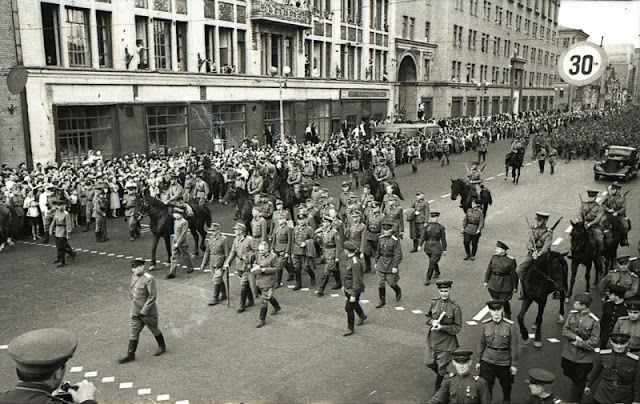
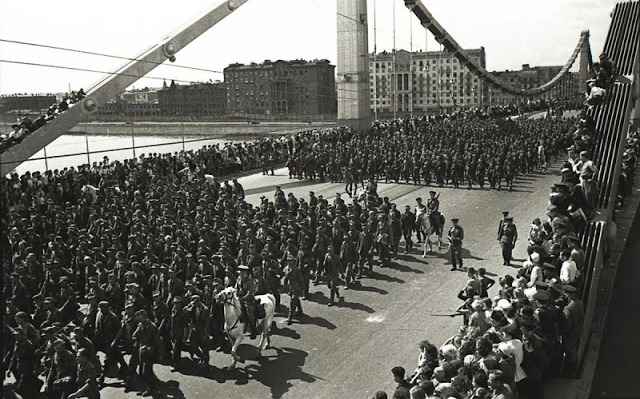
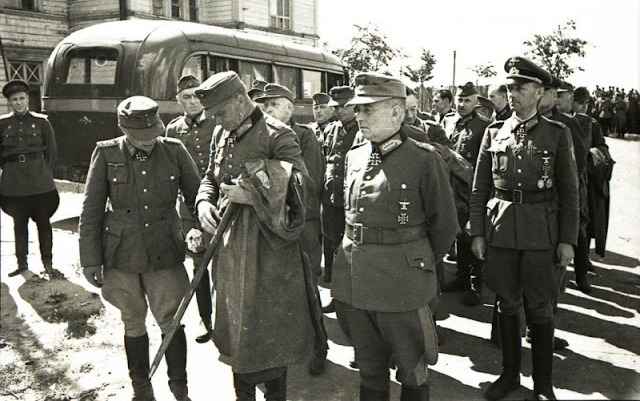
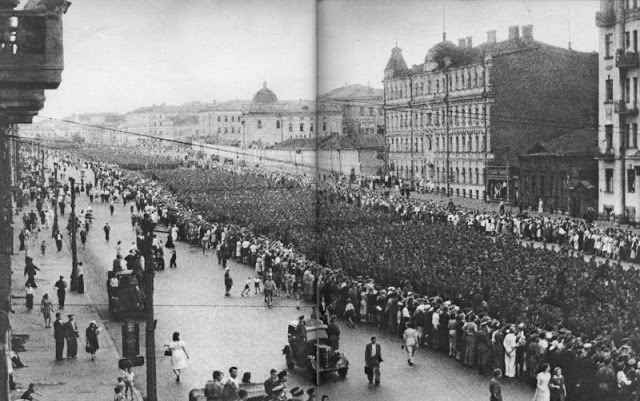

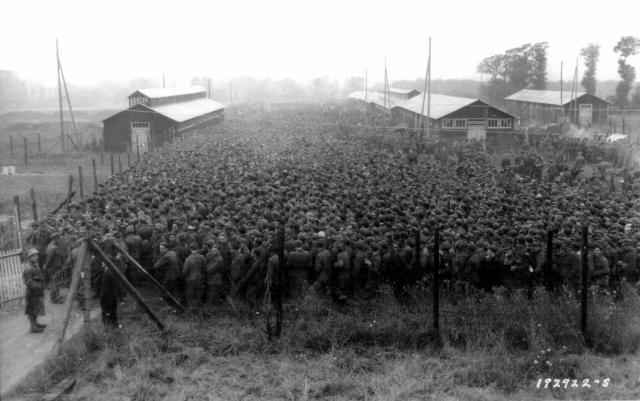
34 in 1944. Camp Nona-les-Pins (Nonant le Pin), German prisoners of war. In France, during Operation Allied troops Falezskoy more than thirty thousand German soldiers were captured.
Guard camp regularly traveled along the barbed wire and shot into the air to suppress attempts to portray the next flight. But attempts to escape were not, because even if they managed to escape from the guards, the penalty will still avoid it would not turn.
Therefore, to preserve life in the camp was much more than a real possibility.

35 in 1944. France. 18-year-old member of the resistance movement Simon Seguin (Simone Segouin). Its military name - Nicole Mina.
Picture taken during a battle with the German troops. The appearance of the girls in the center, of course, it is surprising, but it is this picture became a symbol of women's participation in the French Resistance.
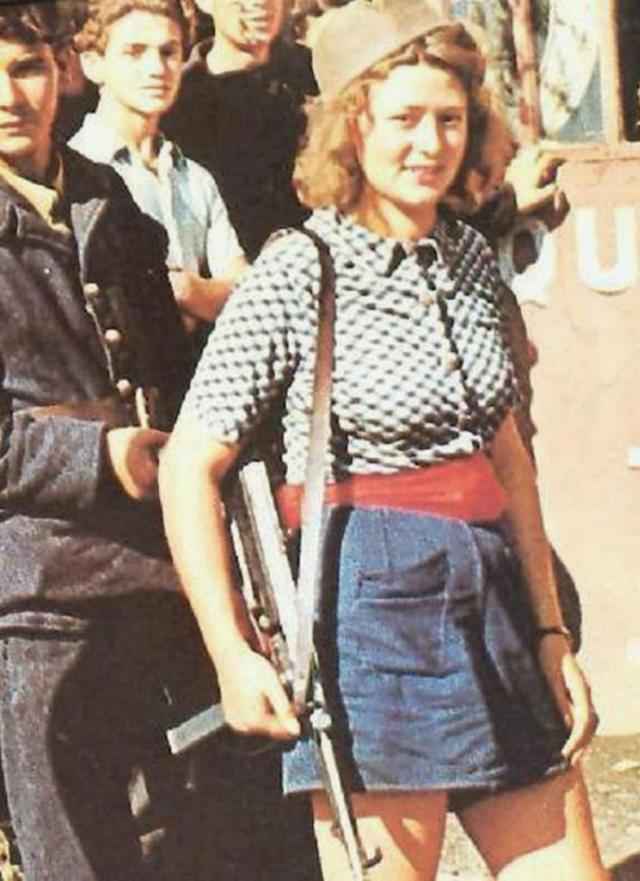
36 Simon on color photography, rare at the time.
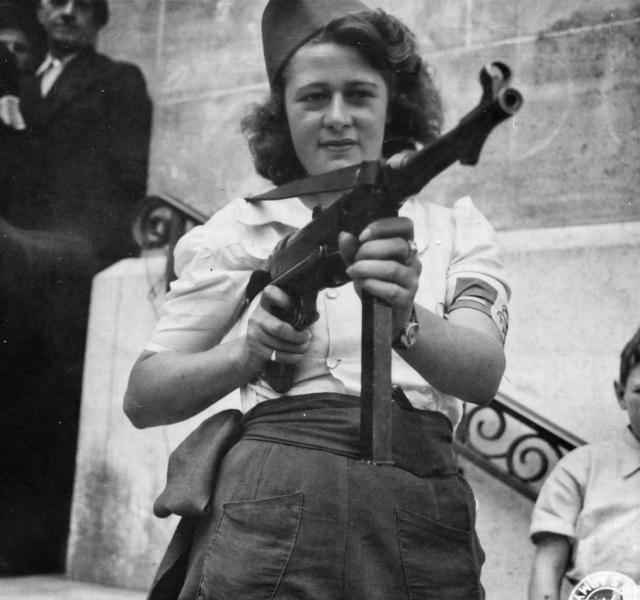
37 Simon and his favorite weapon - the German machine.
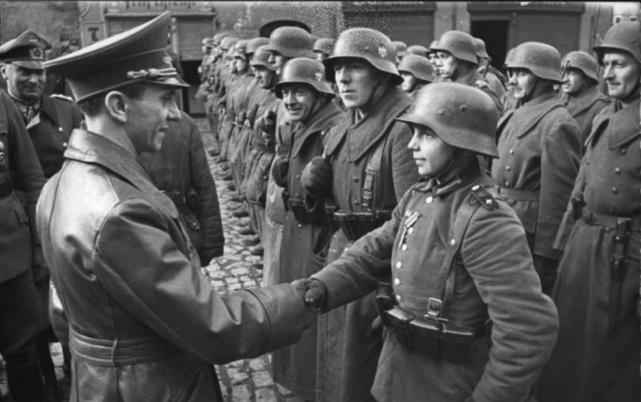
38 March 9, 1945. Young fighter "Hitler Jugend" won the "Iron Cross" for his services during the defense of the city Laubana in Silesia, it congratulates Goebbels.
Today Laubana - this Polish city of Luban.
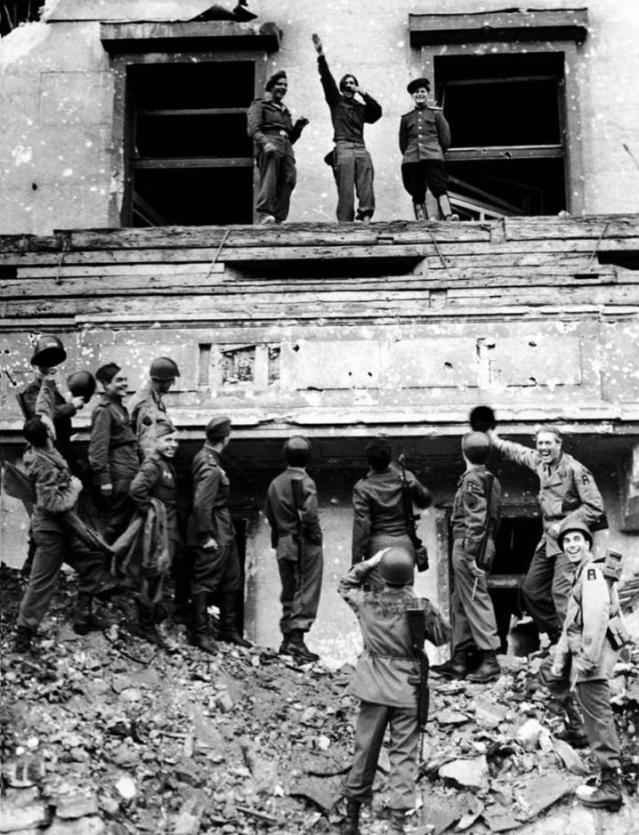
39 in 1945. Balcony Reyhs-office. Soldiers allied armies ridiculed Hitler. Soldiers of the American, British and Soviet armies celebrate the victory together.
The photo was taken July 6, 1945, two months after the surrender. Until the bombing of Hiroshima was a month.
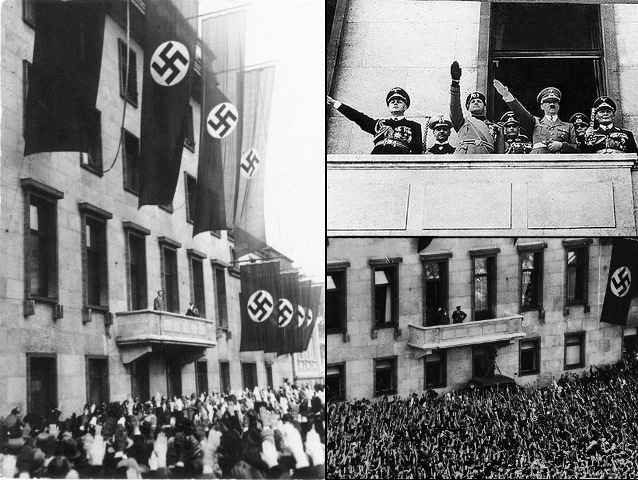
40 Hitler, acting on the same balcony.
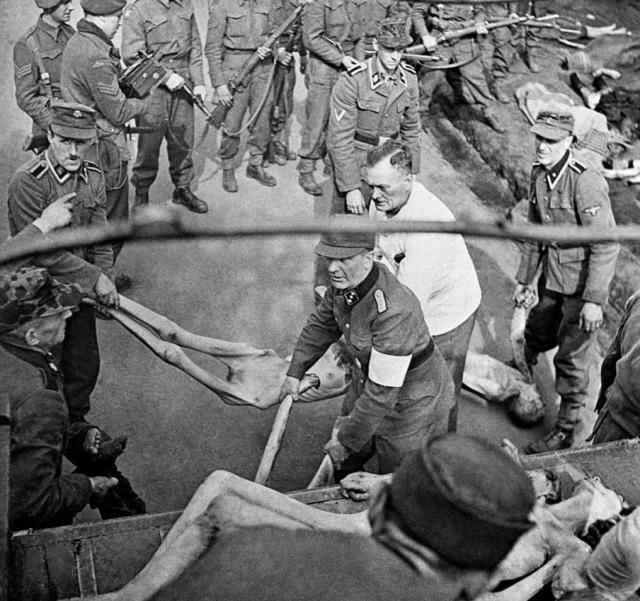
41 April 17, 1945. Concentration camp Bergen-Belsen (Bergen-Belsen), liberation. Guards - SS British soldiers forced to excavate the burial of prisoners and immerse them in the car.
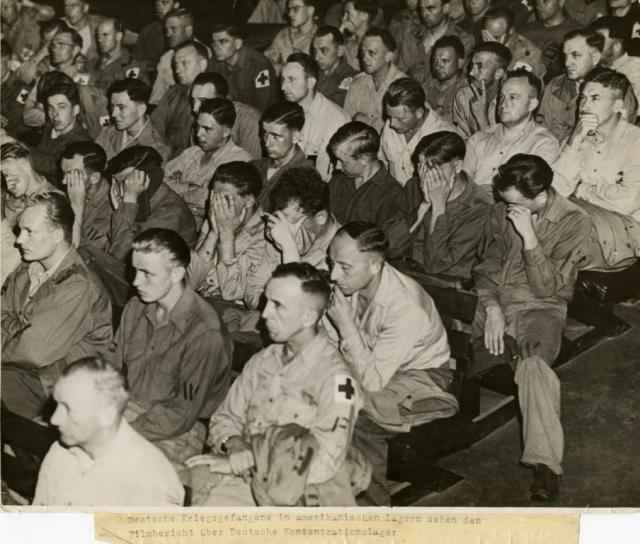
42 in 1942. German soldiers watch a film about concentration camps. In the photo - a reaction to the war documentary evidence of the death camps. This photo is in the Holocaust Museum in the United States.
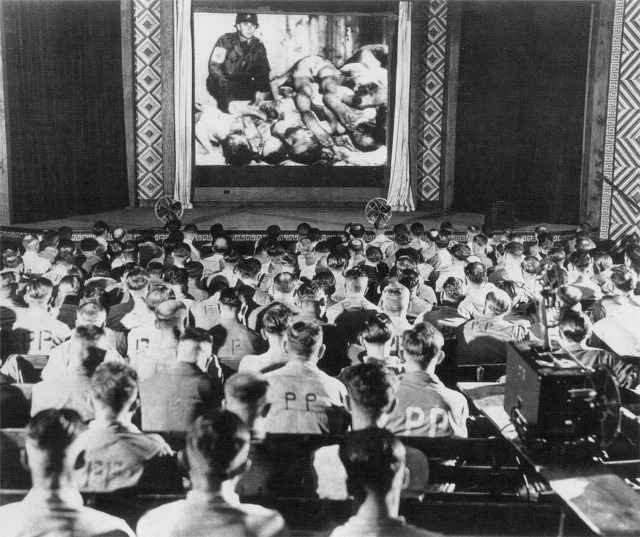
43 Last cinema series, the same scene.
Hello Joyce,
ReplyDeletemy name is Kire Paputts. I'm a Toronto film producer who is currently working on a documentary called Fledglings about WW2 RCAF squadron 425. Our editor came across a photo on your website and we'd like to use it in the film. We are wondering where it's from or who owns the copyright?
The image is labeled "22 Caught Russian spy laughs, looking into the eyes of his death. The photo was taken in November 1942 in Eastern Karelia. We have before us the last seconds of life. He knows that he will die now and laughs."
If you have any questions or require any additional info please don't hesitate to ask.
Thanks in advance,
Kire